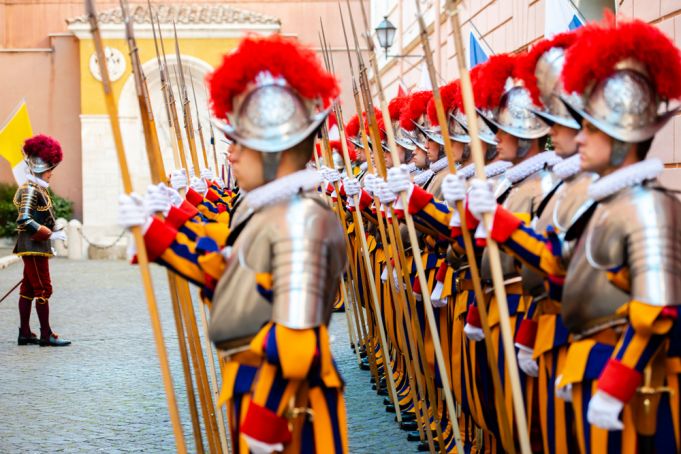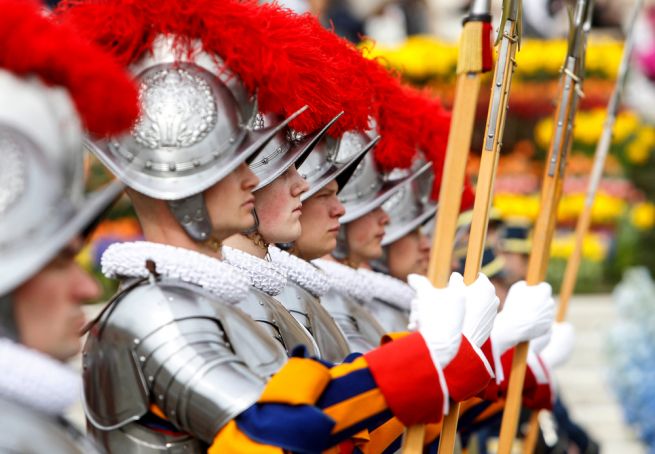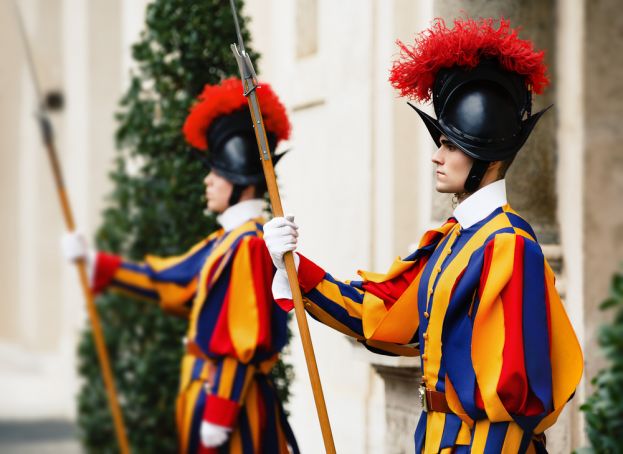Swiss Guards have protected popes for more than 500 years.
Each year on 6 May the Vatican holds a pomp-filled ceremony to swear in new recruits into the Pontifical Swiss Guards, among the oldest standing armies in the world.
The annual event, held in the S. Damaso courtyard of the Apostolic Palace, sees a cohort of new guards take a solemn oath of allegiance to the pope.
The swearing-in ceremony commemorates 6 May 1527, when 147 Swiss Guards died protecting Pope Clement VII from the army of the Holy Roman Emperor.
The pope fled via the 800-m Passetto di Borgo passageway to the nearby refuge of Castel S. Angelo.
Origins
During the Middle Ages, Swiss mercenaries were much sought after by foreign armies due to their military professionalism and their proven capabilities on the battlefield.
Swiss guardsmen began serving the Papal States in the late 14th and 15th centuries.

In 1505 a Swiss bishop at the Vatican, Matthäus Schiner, suggested creating a permanent Swiss corps that would operate under the direct control of the pope.
The Swiss Guard was established by Pope Julius II in 1506, with the first contingent of 150 soldiers arriving in Rome on 22 January of that year.
Who can join the Swiss Guards?
Swiss Guards must be male and of Swiss nationality, as well as being Catholic, unmarried, aged between 19 and 30, and be a minimum height of 174 cm.
They must also have undergone military training and have completed a degree or a high school diploma.

Since the assassination attempt on Pope John Paul II in 1981, there has been a greater emphasis on the guards' non-ceremonial roles, with enhanced training in unarmed combat and counterterrorism techniques.
In addition to protecting the pope, the soldiers perform ceremonial duties, provide security and assist at Vatican functions.
Swiss Guard uniform
The guards carry ancient halberd weapons and swords and normally wear blue doublets and berets.
However they are best known for the blue, gold and red Renaissance-style uniform which, contrary to legend, was probably not designed by Michelangelo.
Worn on ceremonial occasions, the uniform has evolved over the centuries and the current model, redesigned by the Swiss colonel Jules Repond, dates from 1914.

The guards serve for between two and 25 years at the Vatican, in the service of the pope. They are independent of the Swiss armed forces and are employed directly by the Vatican.
In 2022 plans were announced to rebuild the Swiss Guard residence in the Vatican with single rooms and private bathrooms, leading to speculation in the media that Pope Francis or a future pontiff might decide to allow women to join the elite force.
Led by Commander Christoph Graf, the Swiss Guards currently comprise 135 soldiers - its full complement - including the 34 new recruits being sworn in on 6 May 2024.
Photo credit: Drop of Light / Shutterstock.com.

















